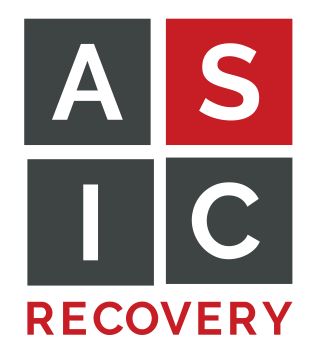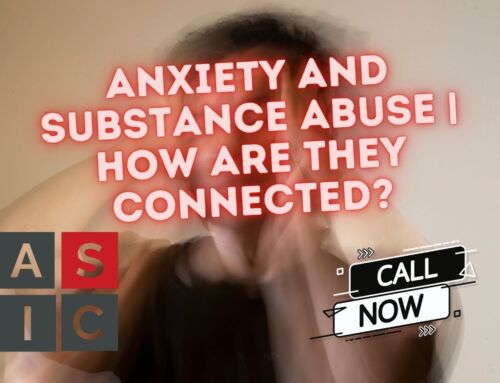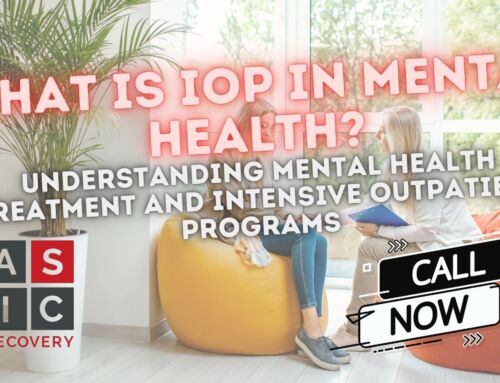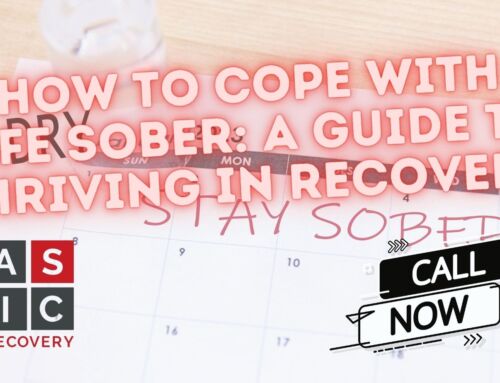Alcoholics Anonymous is the first 12-step fellowship from which all other 12-step fellowships sprouted. Not even 100 years old, A.A. has become the most universal means of recovery from alcoholism.
Alcoholism and addiction are recognized as chronic diseases that get progressively worse over any considerable amount of time. There is no cure for this disease, but it can be arrested and treated.
Before the 12 steps came about, there was little hope for alcoholics. The hope of recovery that the 12 steps brought about was a complete game changer. A.A. spread like wildfire and has saved countless lives since its inception.
At ASIC Recovery, our Intensive Outpatient Program (IOP) is dedicated to helping individuals develop healthier habits and build a life in long term recovery.
Click to learn more.
So what are the 12 steps of A.A.? Where did they come from and what are they all about? This article will take a deep dive into the question, “what are the 12 steps of AA?”
Humble Beginnings
In 1928, a fundamental Christian society called the Oxford Group came into being. The Oxford Group practiced a spiritual formula that included 6 steps:
- Deflation of ego
- Complete dependence on God/prayer and mediation
- Taking moral inventory
- Admitting wrongs
- Making amends
- Helping others
In 1935, the co-founders of AA (Bill Wilson and Dr. Bob Smith) met for the first time. Bill had recovered through the program outlined by the Oxford group, and as part of his own recovery was instructed to find other alcoholics to help. So Bill carried the message to Bob.
A fellowship began to form around these two men, and the question of how to carry their message of recovery to alcoholics around the world became of paramount importance.
They decided to write a book that would give “clear-cut directions” on how to recover from alcoholism. These clear-cut directions were presented in the form of 12 steps.
These pioneers of A.A. promised that if an alcoholic worked the 12 steps sincerely, honestly, and thoroughly, they would have a spiritual awakening. As a byproduct of this spiritual awakening, an alcoholic’s mental obsession to continue to drink would be removed.
The message wasn’t just that an alcoholic could get and stay sober (although that was certainly a part of it); it was that they could live a happy, meaningful life.
Let’s take a look at each step, one by one.
The 12 Steps of A.A. — Simple But Not Easy
It has been said that the 12 steps are a simple program for complicated people. Here are the 12 steps in their simplest form.
1. We admitted we were powerless over alcohol — that our lives had become unmanageable
Step one is the only step that must be done perfectly. It’s the admission of complete defeat; the acceptance of the hopelessness of the alcoholic condition.
In order to admit that you’re an alcoholic, first, you have to know what that actually means. Dr. William D. Silkworth (The doctor from the “Doctor’s Opinion” in the Big Book) gave us a comprehensive picture.
Once an alcoholic takes a drink of alcohol, a physical allergic reaction is set off. The way this allergy manifests is in what he called the “phenomenon of craving.” The phenomenon of craving makes an alcoholic crave more and more alcohol as they continue to drink.
This leads to a spree (binge) that could last anywhere from 10 days to 10 years (more or less). A consequence, such as going to jail, running out of money, or losing a job, can bring a spree to an end.
However, the consequence is not enough to keep a real alcoholic sober. Untreated, a sober alcoholic begins to feel restless, irritable, and discontent (this is known as the spiritual malady).
It’s at this point that the alcoholic mind sells the lie that this time the alcoholic will be able to control and enjoy their drinking. This is called the mental obsession. Once the mental obsession gets an alcoholic to take that first drink, the cycle starts over again.
So, the mental obsession is an insane idea that will always win out. The need for sanity is evident.
2. Came to believe that a Power greater than ourselves could restore us to sanity.
If you’re powerless over alcohol, it would be easy to conclude that some power is needed. If, as an alcoholic, you’ve been unable to keep yourself sober by different methods and none of them have been sufficient, then you need help from something bigger than you.
The second step says “came to believe.” At the beginning of recovery, step 2 can be as simple as, “I believe that my sponsor believes in this program and it has worked for them and all the other people I’ve been seeing in meetings.”
If you are even .01% open to the possibility that there is a Power greater than you that can solve your problem, then you are well on your way.
It’s important to know that your conception of a higher power does not have to be the biblical God. It can literally be whatever you want it to be.
3. Made a decision to turn our will and our lives over to the care of God as we understood Him.
Now this may sound like an overwhelming step, but don’t worry. If by step 3 you knew how to turn your will and your life over to the care of God, then this would be a 3-step program.
In its simplest form, step 3 is a commitment to go through the rest of the steps in order, as outlined in the Big Book, with a sponsor.
You then say the 3rd step prayer (Big Book p. 63) and go on with the process. Once again, your concept of a Higher Power and your relationship to it will grow over time.
4. Made a searching and fearless moral inventory of ourselves.
Now it’s time to take action, which means putting pen to paper. First, resentments are analyzed. You take a look at people, institutions, and principles at whom you harbor ill feelings. A key part of resentment inventory is to identify your part in each of them.
Next, you write down all of your fears. These fears may include:
- fear of failure
- fear of success
- fear that you’re not attractive
- fear that people don’t like you
- fear of losing custody of your children
- fear of death
- fear of stay sober
- fear of relapsing
It’s common to also write down why you have these fears.
The 3rd part of this inventory is a review of your sex conduct and harms you’ve have committed in such relationships.
Throughout this inventory, certain character flaws and patterns of behavior will become apparent. Knowledge of these things is essential for moving into the remainder of the steps.
5. Admitted to God, to ourselves, and to another human being the exact nature of our wrongs.
Step 5 is just the action of sharing a 4th step with a sponsor.
In this way, many events from the past can be brought up, discussed, and seen in a new light. Forgiveness of others and yourself can take place, and the onset of a new attitude toward life will begin to emerge.
In this step, a sponsor will also help identify your character defects. It is the experience of many that the mental obsession gets lifted after this step is taken.
6. Were entirely ready to have God remove all these defects of character.
There’s not much written in the Big Book about step 6. However, it starts with the desire to be different; to be more kind, loving, selfless, and present in life.
The purpose of steps 4 and 5 is to see that a life motivated by self-centered fear is the real problem. Would you like to move out of this self-centered fear and have your Higher Power help you with this? If so, then you can move on.
7. Humbly asked Him to remove our shortcomings.
In step 6, you’ve decided that you want your Higher Power’s help to change and live a less self-centered life.
So now it’s time to say the 7th step prayer (Big Book p.76). This prayer asks your Higher Power to remove any obstacles that prohibit you from being of maximum service to your Higher Power and your fellow man.
This step/prayer is a recommitment of your decision in step 3 to turn your life over to the process of working the 12 steps. More religious A.A. members would call this “living in God’s will.”
8. Made a list of all persons we had harmed and became willing to make amends to them all.
In the 4th and 5th steps, people harmed by your behavior have been identified. In step 8, you add the names of any other people that you have harmed who weren’t identified in the 4th and 5th steps.
Besides people, there may be institutions (jails, hospitals, credit card companies) where restitution needs to take place. In step 8, you’re just identifying where amends need to be made.
NOT EVERYONE ON YOUR 8TH STEP NEEDS TO BE APPROACHED IN YOUR 9th STEP!
9. Made direct amends to such people wherever possible, except when to do so would injure them or others.
With your 8th step list in hand, you’re ready to take some action and make amends to those you have harmed. This is where having a sponsor is extremely important.
Every time you are preparing to approach a person to make amends, your sponsor needs to be consulted. Should this person even be approached? How specifically do you need to describe the harms you’ve committed to those you approach?
If you owe money, should you have some money to give them on your first approach? A sponsor will have experience with making amends. If your sponsor doesn’t have experience with a certain type of amends, they will help you find someone who does.
Making amends could take years to complete. Some amends will never be fully made because of circumstances. Aside from direct amends, there are also living amends.
For instance, if you make amends to your mother for lying to her constantly while neck-deep in your alcoholism, you need to make it a point to not lie to her anymore from that moment forward.
Steps 6 and 7 are about behaving differently — in a way that is less self-centered. Step 9 is a process where you commence this way of living. Once you’ve made a few amends and your sponsor is confident you will continue making them, you go on to step 10
10. Continued to take personal inventory and when we were wrong promptly admitted it.
The Big Book says that by the time step 10 is reached, most alcoholics will lose the obsession to drink. Sanity will have returned.
This doesn’t mean that you never ever think about drinking. It means that if the thought comes into your mind, you can easily let it go and not obsess. This means you can walk down the wine aisle at the grocery store and hardly be affected.
Now, this reaction to the temptation of drinking happens at different times for different people during the process of working the steps.
Some people notice their new attitude immediately, while some don’t notice until one day and say, “Wow, I haven’t woken up in the morning and thought about drinking in over 2 months!”
However, to keep this “new attitude” toward alcohol, maintenance and growth are needed.
Clear-cut directions are given for when selfishness, dishonesty, resentment, and fear crop up.
- Watch for selfishness, dishonesty, resentment, and fear
- Identify which of the 4 things listed above are cropping up and say a prayer asking your High Power to remove them
- Discuss what’s going on with someone else. This you can’t always easily do when something like resentment pops up towards a coworker but you still have 6 hours left in the workday. However, in today’s age, there are apps you can download that allow you to type out 10th steps and send them to people like your sponsor or other people in A.A.
- If anyone has been hurt in the current situation, then you make amends to them.
- Then, rather than ruminating, you turn your thoughts to someone you can help. This doesn’t just have to be another member of A.A. It can be cleaning the toilet, helping your kid with their homework, or simply calling someone and asking them how their day is going.
11. Sought through prayer and meditation to improve our conscious contact with God as we understood Him, praying only for knowledge of His will for us and the power to carry that out.
A word that is important to focus on in step 11 is “improve.” There are specific directions in the Big Book about how to work Step 11, which include a morning routine/ritual with specific prayers and a nightly inventory/prayer/mediation process.
These should always be at the center of step 11; however, there are many things you can do in addition to the directions in the Big Book.
Have fun with this step. There are many things you can do in association with this step, including:
- taking a meditation class
- downloading meditation apps
- going to different religious ceremonies that incorporate meditation
- asking other people in A.A. how they pray and meditate
If you don’t make your prayer and meditation life with your Higher Power fun and something to look forward to, then the chances are that you won’t do it consistently and will view it as a chore.
Don’t sell yourself short! This is a really awesome part of the program.
12. Having had a spiritual awakening as the result of these steps, we tried to carry this message to alcoholics and to practice these principles in all our affairs.
At step 12, it’s time to find alcoholics who desperately want a solution and are willing to do anything to get better. Taking someone through the 12 steps as your sponsor did for you is where you will really see the magic of Alcoholics Anonymous at work.
Going to hospitals, jails, and rehabs — this is something the Big Book says you must not miss.
Step 12 is also about applying the spiritual principles of the 12 steps to your daily life.
It Should Continue For a Lifetime!
These are the 12 steps in their simplest form. Each step will continue to take on a deeper meaning as you commence this way of living.
Remember, step 1 is the only step that has to be done perfectly.
As long as you’re making an honest effort, sincerely and consistently seeking the will of a Higher Power, and helping others, you can be sure that you are on the path that leads to long-term sobriety and a life full of meaning and contentment.
IOP at ASIC Recovery
At ASIC Recovery, our Intensive Outpatient Program (IOP) is dedicated to helping individuals develop healthier coping skills and build a recovery supportive network in all aspects.
Click to learn more.



